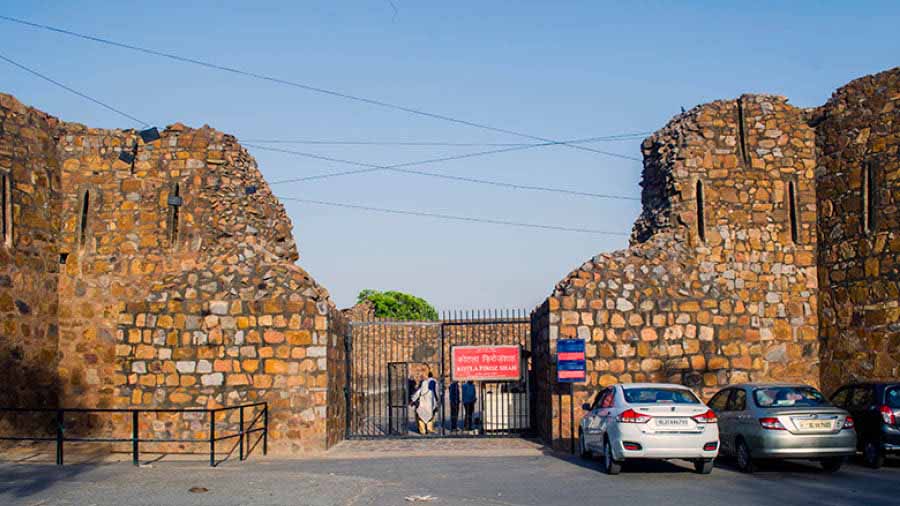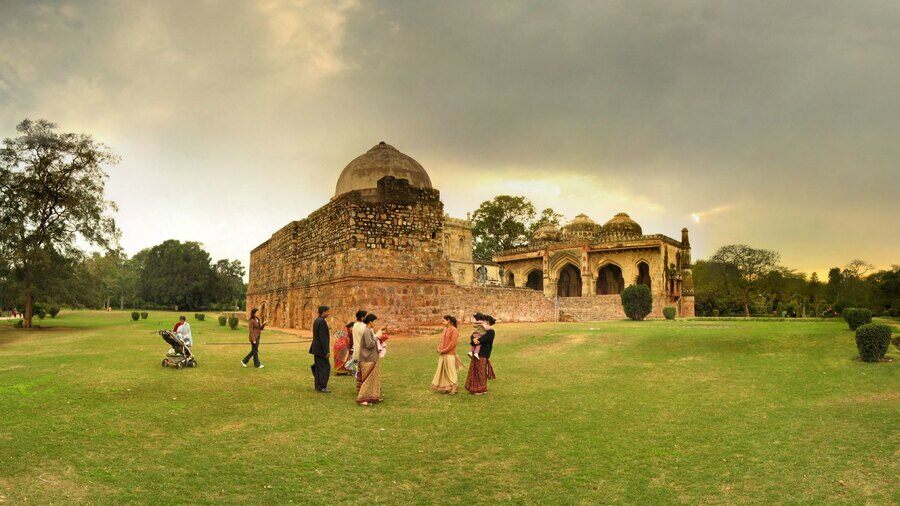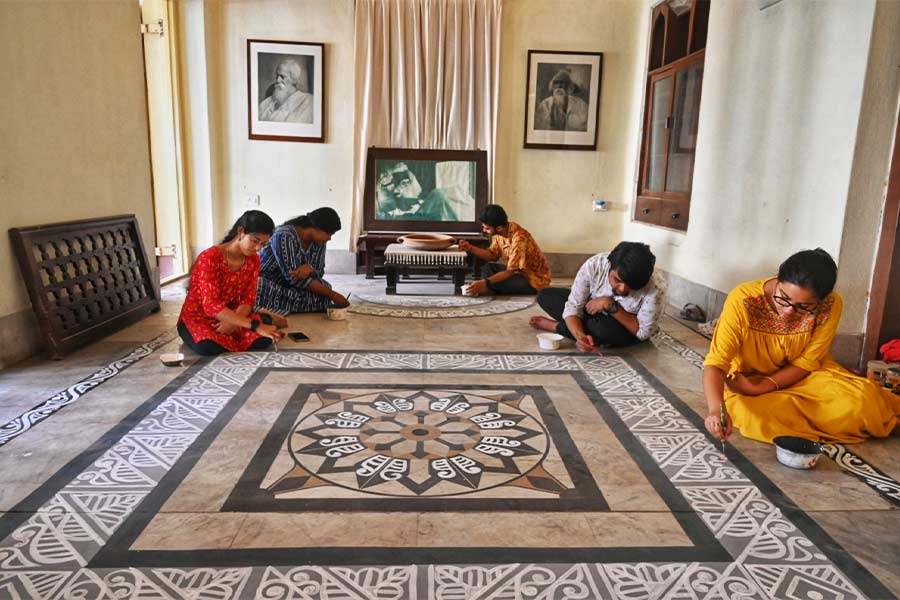The name Feroz Shah Kotla generally refers to Delhi’s cricket stadium. Though in 2019 the stadium was renamed as Arun Jaitley Stadium, cricket enthusiasts and Delhiites still prefer the old name. The original name originated from a nearby fort (Kotla means fort) dating back to the days of Feroz Shah Tughlaq (Reign 1351 – 88), the third ruler of the Tughlaq Dynasty. The ruins of this massive medieval citadel still stand in the shadows of the mighty cricket stadium.
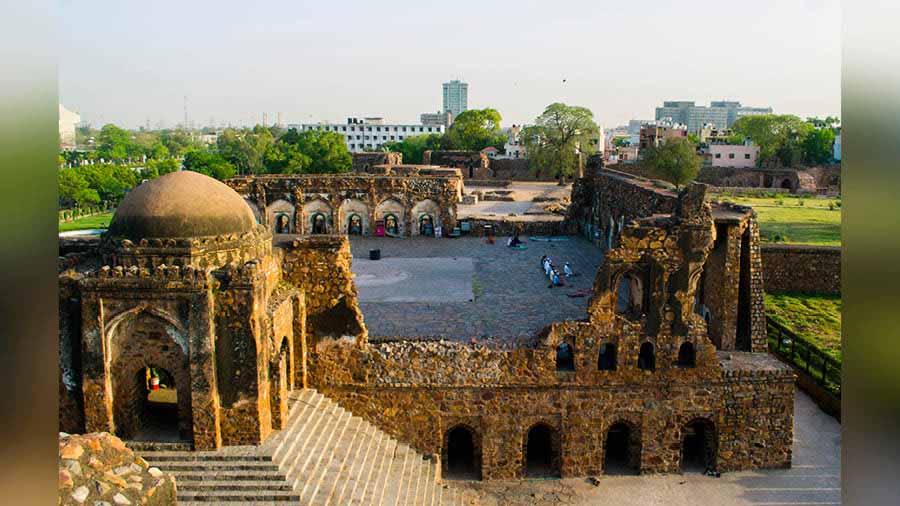
Jami Masjid, Feroz Shah Kotla
Feroz Shah Tughlaq was a master builder and is credited with the erection of 1,200 gardens in and around Delhi along with 200 towns, 40 mosques, 30 villages, 30 reservoirs, 50 dams, 100 hospitals, 100 public baths and 150 bridges. The greatest creation of Feroz Shah Tughlaq is the citadel, considered as the fifth citadel of Delhi. It also happens to be the third of the citadels erected by the Tughlaq dynasty.
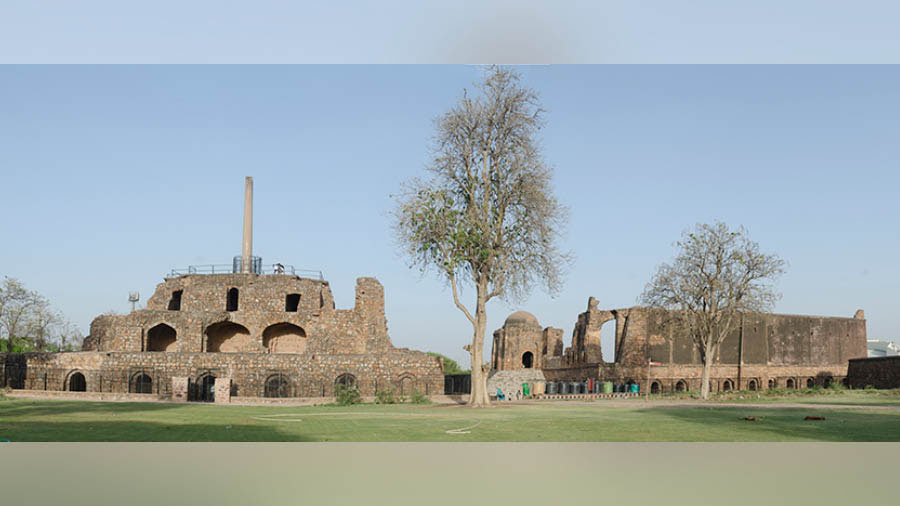
Hawa Mahal with Ashokan pillar on top (left) and Jami Masjid (right)
Since the previous four citadels were located far from the river and were abandoned for lack of water, Feroz Shah decided to build his citadel on the west bank of Yamuna. Unlike Tughlakabad, Feroz Shah Kotla lacked the defensive construction and after the collapse of the Tughlaq Empire, the Mongol invader Timur found it an easy target. In 1398, Timur gladly carried out all the riches of the citadel leaving behind the ruined structures. Despite being plundered and with centuries of neglect, Feroz Shah Kotla still houses several interesting ruins, revealing the former glory and splendor.

Ashokan pillar, Feroz Shah Kotla
But the citadel also has its tales of friendly ghosts locally known as djinns. Every Thursday, thousands of visitors visit the ruins of the ancient citadel. Strangely these visitors are not history or heritage enthusiasts but are on the look out for the blessings of djinns. Irrespective of religion they visit the ruins of Feroz Shah Kotla with photocopies of letters, citing their problems. They stick the letters on different strategic spots of the citadel and offer prayers to the djinns. Strangely the concept of letters to the djinns has only been a recent concept and started shortly after the emergency of 1977. According to experts it all started during the emergency period with the poor and working class people being displaced from the Old City to resettlement colonies across the river.

Feroz Shah Kotla baoli, circular stepwell
The citadel was designed by Feroz Shah Tughlaq’s state architects Malik Ghazi Samana and Abdul Haq. It follows a rectangular plan with dimensions 800 m by 400 m, with the longer side along the north-south axis. Most of the buildings within the citadel are made of rubble masonry covered with heavy plaster and without any surface ornamentation. Today apart from the Jami Masjid, Hawa Mahal and a round stepwell, nothing much remains.
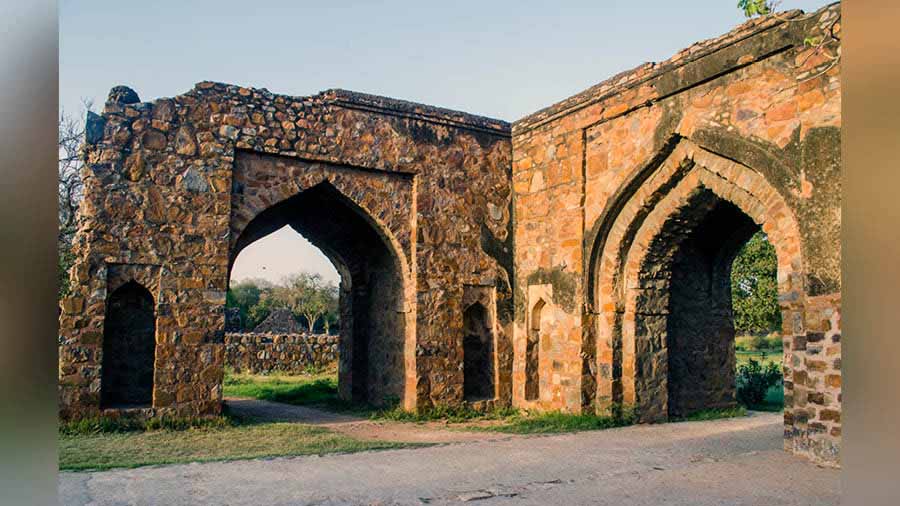
Arches, Feroz Shah Kotla
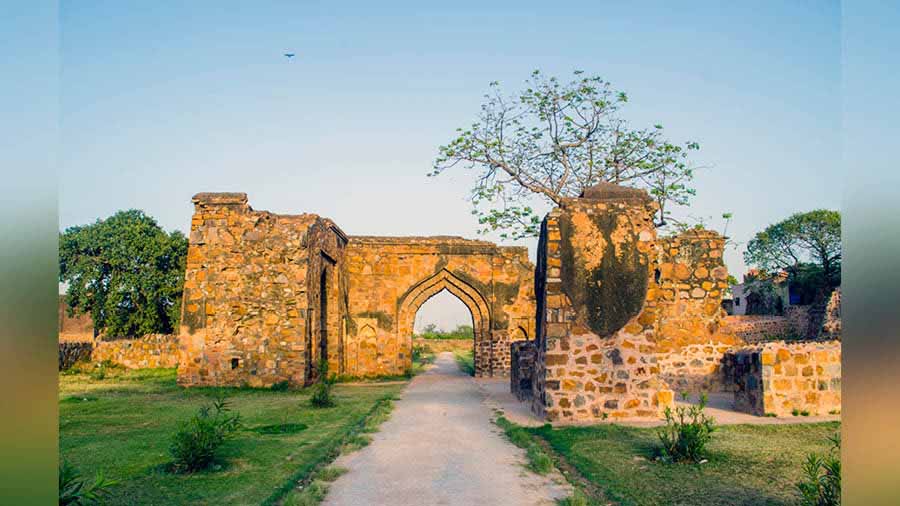
Arched gateways, Feroz Shah Kotla
The Hawa Mahal is a three-tiered stepped pyramid-like structure crowned with the Ashokan Pillar. The Ashokan Pillar was shifted from Topar in Ambala by Feroz Shah Tughlaq and placed atop the Hawa Mahal. The transportation of the 13 m high 27 ton pillar was a massive effort involving a 42 wheel carriage operated by 8,400 men. Stairs led to the base of the pillar containing inscriptions in Prakit. Incidentally, Delhi contains another Ashokan Pillar, which was also shifted by Feroz Shah Tughlaq and stands on the North Ridge.
On the south of the Hawa Mahal lies the gigantic mosque known as Jami Masjid. The mosque rests on a series of cells on the ground floor and is approachable by a long flight of stairs leading to a domed pavilion gateway on the northern side. Strangely the Jami Masjid is still an active mosque and attracts thousands of devotees during the time of Eid. Even on normal days large groups of local Muslims along with Muslim working in the nearby offices drop in for their daily namaz.

Scattered structures, Feroz Shah Kotla
In front of the stepped pyramid is a stepwell locally known as baoli. The city of Delhi is no stranger to baolis but this happens to be the only circular baoli in Delhi. Apart from the three more or less intact structures, Feroz Shah Kotla houses several other ruined structures including archways, gates and fragments of the outer wall.


